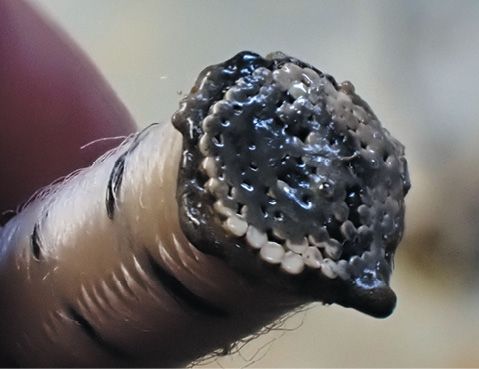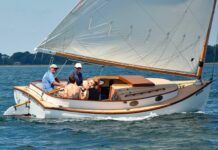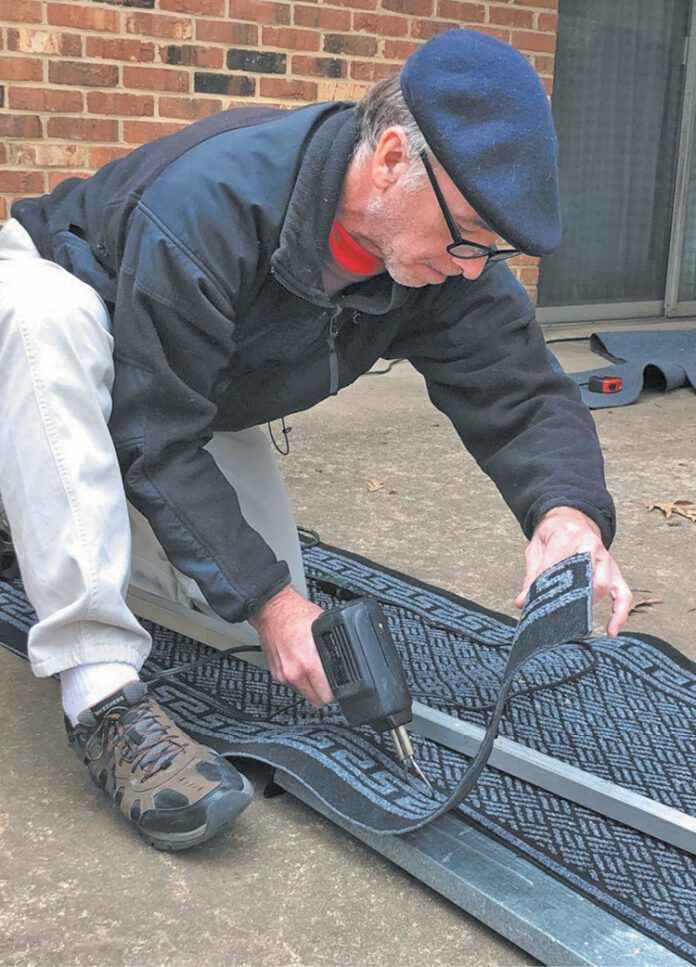A hot knife is a luxury item, but nothing is better for cutting and sealing synthetic rope and fabric. We find ourselves reaching for it often. Until recently, we’ve been relying on a hot knife conversion for our 50-year-old Radio Shack soldering gun (see “The Unsung Hero of Canvas Work,” PS March 2020). But that gun bit the dust, and when we plugged the attachment into a new Weller gun of the same specifications, we were disappointed with the results. It takes too long to heat up and doesn’t get as hot. So we began a search for a dedicated hot knife that wouldn’t break the budget.
Popular among professionals, the $190 Engle knife was a pleasure to use, but it’s too expensive for a the DIY sailor who will only use it occasionally. Other sailors have reported good experiences with the RoMech Hot Knife ($70), and we almost chose that. After doing a bit more research, we bought the less expensive Gonytia Hot Knife ($60).
HOT KNIFE TIPS
A hot knife may seem simple to use, and it is if you follow a few basic rules. Test the temperature on a piece of scrap first. Cut larger ropes halfway through from each side for best results, then use the knife to seal the ends. It’s best to cut bungee cords using a slightly higher temperature to cut in one stroke.
A hot knife is truly the best way to cut and seal bungee cord. Cutting and sealing in two steps won’t deliver the same neat results. This is because the cover frays and pulls back as soon as you cut it, so it won’t neatly seal with the rubber core when you go back to melt the end.
It’s best to cut fabric on a piece of sheet metal or another heat-resistant surface. Peel apart the cut edges as you work so they don’t re-bond. Do not overheat. This will lead to lumps and a sloppy cut.
Dyneema is easy to cut with a hot knife, but you will still need a high-quality scissor or knife to make another cut before splicing and tapering. DSM, the maker of Dyneema, recommends the Engle HGSM Hot Knife for professional riggers.

GONYTIA HOT KNIFE
The kit we chose came with one blade for cutting rope and another for cutting fabric; just get the fabric blade, as it works very well for both foam and fabric.
You control temperature with a single, unmarked dial. After a few test cuts we learned that a quarter-turn was hot enough for cutting fabrics. For cutting rope up to ¾ inches, we used a slightly higher temperature.
The knife warms up in just 5–10 seconds, and the fabric blade makes smooth controlled cuts. Our testers thought it handled tight radius turns just as well, or perhaps even better than the fabric blades sold standard with the Engle and RoMech knives.
The knife does not have a sheath or a case, just a cardboard box. Because the blade remains hot for a few minutes after use, you’ll want to be careful where you put it down. Fortunately, when you set the knife down, only the handle touches the surface it rests on. Still, it’s a good idea to keep it unplugged if you’re going to leave it for a while.
Burning rope and rubber can smell bad. Unfortunately, particle filters, like the HEPA filter we built a couple years ago (see “Making Your Own Workshop Filter,” PS June 2022) won’t cut down on the smell. Hot knife fumes are mostly vapor, so only venting outside or using a carbon filter will effectively reduce smell.

So how does our knife compare to the DIY version we’ve been using? It’s lighter, more ergonomic, the blade is better, and it heats up much faster. We’ve already used it to cut sails, dozens of ropes, and many yards of fabric. We expect it to last a long time.




































